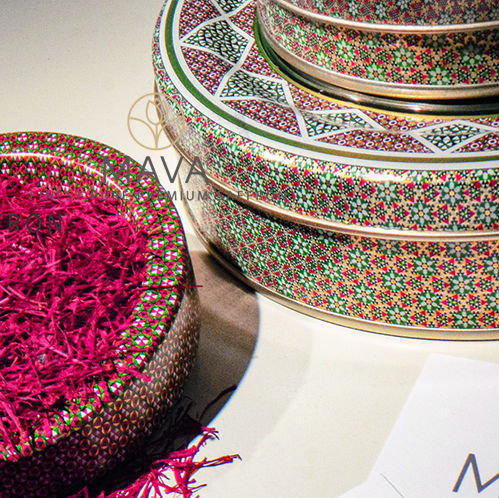Choose the Right Variety and Source
When it comes to saffron cultivation, choosing the right variety and source is of utmost importance. Opt for premium saffron corms or bulbs from a reputable supplier. Varieties such as Crocus sativus L. are known for their high yield potential and are highly recommended.
Ensure that the corms you select are healthy, firm, and free from any diseases or damage. This will ensure a strong foundation for your saffron crop and increase your chances of a successful harvest.
Ideal Soil Conditions
Saffron thrives best in well-drained sandy or loamy soils. The pH of the soil should be between 6.0 and 8.0, slightly acidic to neutral. It's important to avoid heavy clay soils that tend to retain excess moisture, as this can lead to rot and low yields.
To prepare the soil for saffron cultivation, incorporate organic matter such as compost or well-rotted manure. This will improve the soil's fertility and structure, providing an optimal environment for the saffron corms to grow.
Adequate Sunlight and Temperature
Saffron requires full sunlight exposure to flourish. Ensure that your saffron plot receives at least 8 hours of direct sunlight each day. While saffron is a resilient plant, it performs best in regions with cooler climates.
The ideal temperature range for saffron cultivation is between 15°C and 20°C (59°F and 68°F) during the growing season. This temperature range promotes healthy growth and optimal flower production.
Planting Techniques
Timing and proper planting techniques are crucial for maximizing saffron yield. Saffron corms should be planted in late summer or early autumn, about 10-15 cm (4-6 inches) deep in the soil. Space the corms about 10 cm (4 inches) apart, ensuring that the pointed ends face upwards. This spacing allows room for the corms to multiply and encourages higher yields.
Optimal Irrigation
Proper irrigation techniques are essential for maximizing saffron yield. Establish a regular watering schedule, especially during the corm's growing phase. Soak the soil deeply using drip irrigation or a watering can to ensure the roots receive enough moisture.
Avoid overwatering, as it can lead to fungal diseases and bulb rot. During the dormant period, reduce irrigation and allow the corms to naturally receive moisture from rainfall.
Fertilization
Adequate nutrition is vital for saffron plants to produce abundant flowers. Before planting, incorporate a balanced organic fertilizer into the soil according to the manufacturer's instructions. Avoid excessive use of nitrogen, as it promotes vegetative growth at the expense of flower production.
Fertilize again after harvesting the flowers to replenish the corms for the next season. This ensures that your saffron plants have the necessary nutrients to produce high-quality saffron threads.
Pest and Disease Management
Regular monitoring is essential to ensure the health of your saffron crop. Look out for common saffron pests such as aphids, thrips, and spider mites. Utilize organic pest control methods or consult with local agricultural experts if necessary.
Preventative measures such as crop rotation and maintaining proper crop hygiene can significantly reduce the risk of diseases. This will help ensure a healthy and thriving saffron plantation.
Harvesting at the Right Time
Harvesting saffron flowers at the right time is crucial for maximizing saffron yield. Flowers should be collected early in the morning, once they have fully bloomed but before they start to wilt. Delicate crimson-red saffron stigmas should be carefully plucked using tweezers or your fingers.
Promptly remove and discard any yellow or white parts of the flower, as they do not contribute to saffron yield. This precise harvesting technique ensures that you obtain the highest quality saffron threads.
Proper Drying and Storage
After harvesting, it's important to properly dry and store your saffron threads. Spread the collected saffron threads evenly on a dry, flat surface. Allow them to air dry in a cool, well-ventilated area for about 2-3 weeks until they become crispy.
Once dried, store the saffron in an airtight container away from direct sunlight and moisture. This will help preserve the potency, flavor, and aroma of the saffron.
Purchasing Premium Saffron
If you're looking to buy premium saffron, there are various options available online. Look for reputable suppliers that offer pure saffron spice, ensuring that it is sourced from high-quality corms. Check for customer reviews and certifications to ensure the authenticity and quality of the saffron you purchase.
Investing in premium saffron will not only enhance the flavor and aroma of your dishes but also support sustainable saffron cultivation practices.
Additional Tips and Considerations
Protect your saffron crop from extreme weather conditions by providing shade or cover when necessary.
Consider implementing organic farming practices to promote the health and sustainability of your saffron plantation.
Keep a record of the planting and harvesting dates, as well as any observations or changes you make throughout the cultivation process. This will help you fine-tune your saffron cultivation techniques in subsequent seasons.
By following these tips and techniques for maximizing saffron yield, you can enhance your saffron cultivation efforts and ensure a bountiful harvest. Remember that patience, proper care, and attention to detail are key to reaping the rewards of this prized spice.
Start your saffron cultivation journey today and enjoy the satisfaction of harvesting your own premium saffron threads. With the right techniques and a little bit of dedication, you'll be able to savor the unique flavors and aromas that saffron brings to your culinary creations.



